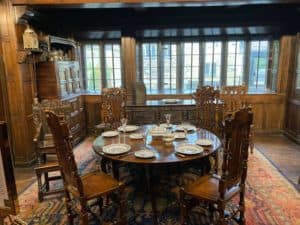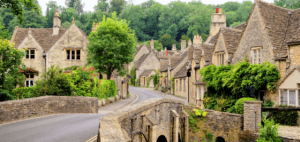Shibden Hall: A Monument of Lesbian History in Halifax
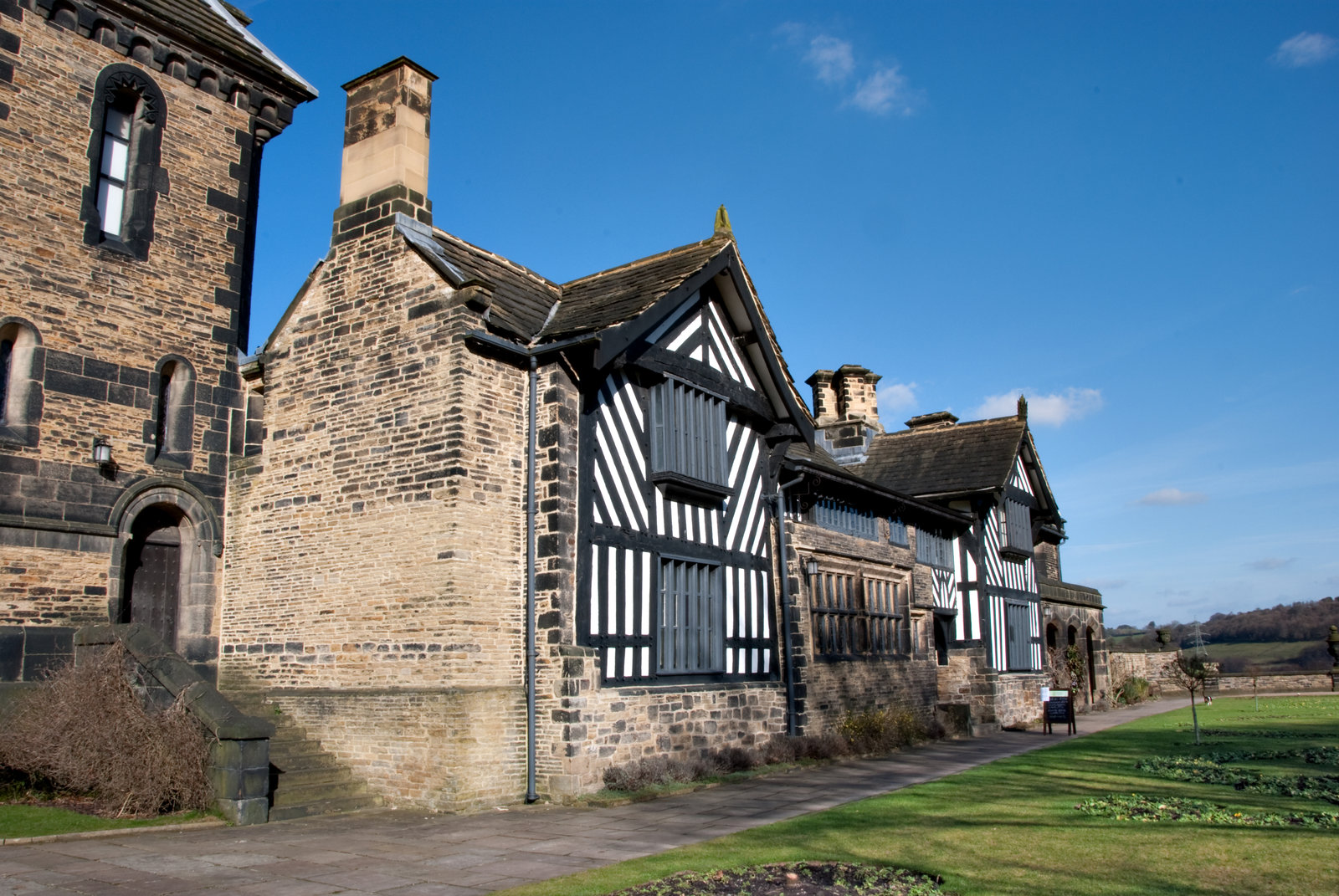
Updated On: February 26, 2024 by Ciaran Connolly
Shibden Hall in Halifax, West Yorkshire, has recently gathered attention. The location has become the main filming location for the BBC TV series Gentleman Jack. The show is based on the diaries of Anne Lister, a 19th century businesswoman, landowner and traveler – and the hall’s most famous resident. Anne was a lesbian in a time where same-sex relationships were forbidden. For decades after her death, Shibden’s walls whispered with scandal and secrets; now the house, a public museum, stands as a testament to courage and love. Its rich history makes it a must-see for anyone visiting Yorkshire.
Table of Contents
Shibden Hall as Home
Shibden Hall was first built around 1420 by William Oates, a cloth merchant who accrued his wealth through the prospering local wool industry. The subsequent families, the Savilles, Waterhouses and Listers, that lived in Shibden Hall each made their mark on the house. Whether this was updating and modernizing the architecture or with their stories and history. Outside, Shibden’s most striking feature is its Tudor half-timbered façade. Inside, gleaming mahogany paneling ennobles its’ small rooms.
Over the years, fireplaces have been added, floors altered and rooms converted, giving the hall its unique charm. Shibden Hall tells a tale of many different lives. If you step into the Housebody, the heart of the house, and look at the window, you will be able to spot the family crests of the Oates, Waterhouses and Savilles. However, it is Anne Lister’s influence on the house that is the most unmissable. She lived there from the age of 24 with her Uncle James and Aunt Anne.
After the death of her uncle in 1826, and due to the death of her brother some years earlier, the management of the hall fell to Anne. As a member of the landed gentry, she was granted a level of freedom that few women had in the 19th century. She was fiercely proud of her ancestry and determined to improve the hall, that was now becoming debilitated, into a beautiful, dignified home. When she added a grand staircase to the Housebody she had her initials engraved in the wood as well as the Latin words ‘Justus Propositi Tenax’ (just, purpose, tenacious). Her many renovations around Shibden Hall speak of a woman determined to exercise her independence and shape her life to her vision.
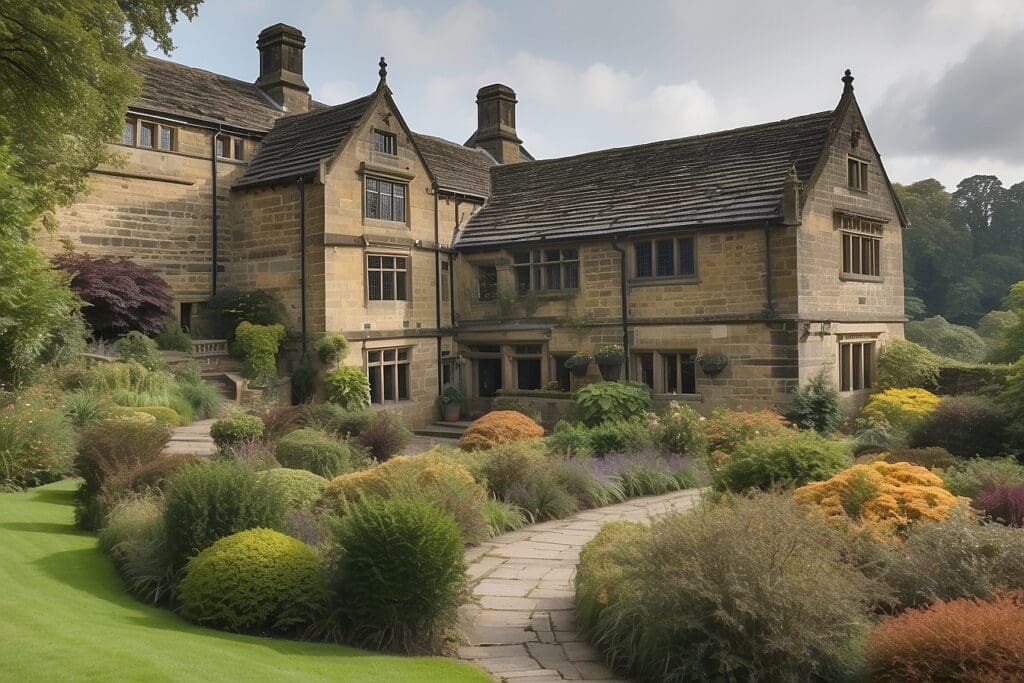
But Anne’s vision hadn’t always included Shibden Hall. Always hungry for new knowledge and experiences, the strong-minded, well-educated Anne found Halifax society dull and left to travel frequently across Europe. Anne knew from a young age that she couldn’t be happily married to a man and her greatest dream was to set up home at Shibden Hall with a female companion. Ostensibly, she and her partner would live together as respectable friends, but in their hearts – and behind the locked door of Shibden – they would live in a committed, monogamous relationship on par with marriage.
In July 1822, Anne visited North Wales to call upon the famous ‘Ladies of Llangollen’, Lady Eleanor Butler and Miss Sarah Ponsonby. The pair of women ran away from Ireland – and their families’ pressure to marry – in 1778 and set up home together in Llangollen. Anne was fascinated by the two women’s story and excited to see their gothic cottage. Plas Newydd was an intellectual hub – hosting guests such as Wordsworth, Shelley and Byron – but also an idyll of domesticity in which Butler and Ponsonby lived for nearly half a century.
Since intense, romantic friendships between women were the norm in 18th century Britain, ‘The Ladies of Llangollen’ would have been seen as two spinsters by many outsiders. However, Anne suspected their relationship went past the platonic. During her visit, Anne only met Miss Ponsonby, as Lady Eleanor was ill in bed, but Anne recounts her and Sarah’s conversation with vigor in her diaries. Anne recognized a kindred spirit in ‘The Ladies of Llangollen’ and aspired to lead a similar life. In 1834, Anne achieved her dream of a life-long female companion when her lover, Ann Walker, moved into Shibden Hall. The two women had exchanged rings and pledged their loyalty to each other at Holy Trinity Church in York. (The two women took the sacrament together, which Anne believed made them married in the eyes of God). Afterwards, like any other newly married couple, Anne Lister and Ann Walker set up home at Shibden – and started decorating.
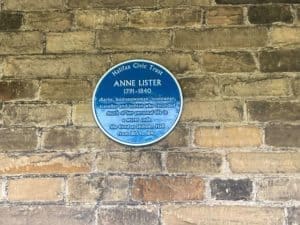
In 1836, after the death of her aunt, Anne inherited Shibden Hall. She employed the architect John Harper of York to help her transform Shibden Hall. She began by commissioning a Norman-style Tower to house her library. Anne also raised the height of the Housebody, adding an ornate fireplace and the staircase. These transformations reflect Anne’s passion for learning and progression, but also her desire to design a comfortable and personalised life-long home for her and Ann, where the pair of them could live happily as they wished, in spite of society’s expectations. Ann Walker’s wealth helped finance Shibden’s makeover and Anne Lister left the house to Ann in the event of her death and on the condition Ann did not marry.
Sadly, Anne Lister died in 1840 and her likely hopes that Shibden would remain a sanctuary for her wife did not come true. Ann Walker did inherit the house, but after a period of mental illness, her family forcibly removed her and she spent the rest of her days in an asylum. The secret of the two women’s relationship remained hidden for decades. John Lister, a descendant of Anne’s, hid her diaries – containing the details of her lesbian sexuality – behind an oak panel in one of Shibden’s upstairs bedrooms. In a world where so many stories of same-sex love have been suppressed and lost to history, Shibden Hall is an incredible memorial to the life of an extraordinary woman.
 Shibden as Museum
Shibden as Museum
Shibden was brought in 1926 by a Halifax councilor and is now a public museum. There is a small café, gift shop, miniature railway and many surrounding walking trails. After being closed due to Covid and also for the filming of Gentleman Jack’s second series, Shibden is now open again to the public. Pre-booking is required.
At the back of Shibden Hall is a 17th century aisled barn. It is easy to imagine the sounds of horses shuffling in the hay and carriages clattering against the cobbles. It is here Anne kept her beloved horse, Percy. Shibden Hall and the Aisled Barn are available to hire as venues for weddings and civil ceremonies.
Next to the Aisled Barn, there is also the West Yorkshire Folk Museum, a brilliant snapshot into what life was like for the working communities of the north in the past. In the farm buildings there are reconstructions of a Blacksmith’s shop, a Saddler’s shop, a Basket-weaver’s shop, a Hooper’s shop and an Inn. If you pop your head through one of the doors, you can peer straight into history.
As Shibden is a Grade II historic building, there is restricted accessibility for wheelchair users. The Folk Museum and second floor of Shibden is not accessible for wheelchair users. Shibden Hall is fairly central in Halifax, but can appear hidden away in the hills. For accurate directions, details on parking and guidance for disabled visitors, it is best to consult the museum’s website. The museum also sells walking guides for the local area so you can take in the beautiful landscape. Overall, a visit to Shibden Hall and a walk around its grounds will take no more than a half a day.
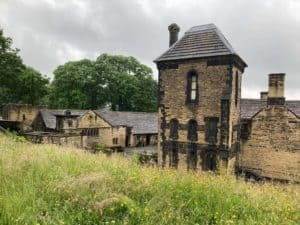
Shibden and Beyond
If you are in Halifax for the day and wish to expand your trip, the Bankfield Museum is located nearby (it’s a five-minute journey in the car.) The museum’s displays cover local history, costume, art, toys, military history, jewelry and textiles from around the world. Pre-booking is also required.
For more things to do in Halifax, there is Eureka! The National Museum for Children and The Piece Hall. The attractions neighbor each other and are a 20 minute drive away from Shibden Hall. If you have children aged 0-11 Eureka! promises a fun day with lots of interactive exhibits. There’s a child-sized town where children can learn about the world of work and sensory play areas for under-fives. The Piece Hall, built in 1779 as a trading centre for the north’s growing textile industry, is a stunning Grade I listed building with a 66,000 sq. ft open-air courtyard. It houses an eclectic mix of independent shops, from hand-made jewelry to vintage clothing to luxury soap, and a quirky range of bars and cafes.
For another great trip to a historical house rich with history, Plas Newydd, the home of the ‘Ladies of the Llangollen’, is also open as a museum. Explore the elegant regency architecture, stroll through the picturesque gardens and nibble cake in one of the tearooms. Like at Shibden Hall, you can listen close to the many, intriguing stories the walls have to tell.


